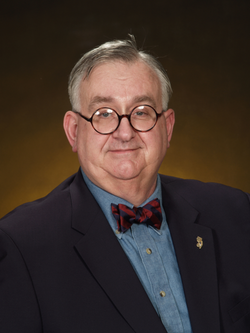In a recent issue of Trailer/Body Builders magazine, Norman Mineta, our Secretary of Transportation declared that, "our highways are safer than ever." This statement made me stop dead in our tracks. It took a moment before I was able to read on to gather the full meaning of his words. It would appear that he was referring to the number of people being killed or injured in motor vehicle accidents and incidents. I was impressed with the research by the National Highway Traffic Safety Administration. Their records indicated the overall fatality rate on the nation's highways was at its lowest level since the agency began keeping records 29 years ago.
Can we in the emergency service world make any sort of similar statement about our safety as we operate on the roads of North America? No. We cannot. And we cannot for a really simple reason. It is because no one is keeping track of the numbers of deaths and injuries.
Other than the hard word being put forward by Jack Sullivan and Howard Cohen, no one that I know of is keeping an eye out for the struck-by incidents that are killing and maiming our fire, police, and emergency medical associates. We need to step up our efforts and move to the next level.
We face the lack of solid data on what is actually happening at the scene of struck-by incidents. Our information is generally coming in from news sources and we must therefore infer a great deal rather than assess hard data. If we are to create a truly effective program with which to protect our people on the highways, we need to develop a flow of data from the incidents that are occurring around our nation.
My research tells me that a number of issues have been identified as impacting safety on the highways of North America. There is nothing really startling on the list of things that are killing and injuring people. The list contains such issues as:
- Speeding
- Distracted driving
- Drowsy driving
- Plain old impatience
- Road rage
A great deal of effort at the federal level has gone into the issue of vehicular occupant protection. A wide array of built-in protection is provided to insure that vehicle occupants can survive a car crash. Who is protecting you and me out there on the highways and byways? I do not know about you, but it seems to me that the average set of turnout gear does not provide a great deal of crash resistance. Perhaps it is time to use laboratory dummies rather than the real living and breathing kind that have been used in the past.
The only problem here is that it is the human body which will not survive close, personal contact with a moving motor vehicle. I for one do not wish to be equipped for flying through the air in a rubber highway safety suit. I want to be sure that I am never hit by that drunk driver, or impatient shopper, or high-speed soccer mom.
So what are we doing about this problem? Steve Austin is laboring valiantly in the vineyards of the federal bureaucracy working to create alliances with other agencies facing the same problems as we are. Respondersafety.com is working with the U.S. Fire Administration on a number of initiatives all of which are relevant to or tangential to our emphasis on preventing struck-by incidents.
I am now going to call upon you to join our highway safety effort. Beginning shortly, there will be an on-line form for you to use in reporting struck-by and near-miss incidents. We will be attempting to get a handle on the true magnitude of the problem in North America.
You will be provided with space to answer a number of questions. We will also need a way to contact you for a verbal follow-up. I will probably be handling a great deal of the interview work and then funneling the information into the data base that Jack Sullivan maintains.
We are hoping that our own effort will lead to some much larger effort being undertaken by someone with more resources. However, someone or somebody has to get the ball rolling, and we here at Respondersafety.com are that someone.
You will see the link to this new form shortly. We would insist that you use it anytime you are made aware of a close call, near-miss, or struck-by situation. We are hoping that people take this seriously. As the editor, I want to assure you that nothing will reach the website until I have personally checked it out.
Please join with us. The life you save may be your own.


